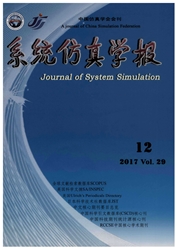

 中文摘要:
中文摘要:
目的 应用三维力学传感器测量全冠牙体预备过程中的切削力,为虚拟牙科手术培训系统的程序设计提供数据依据。方法 操作者共12名,分为医师组与学生组,每组各6名,男、女各3名。每名操作者分别对3颗离体上颌前磨牙进行全冠牙体预备。通过三维力学传感器,测量切削力,记录各牙面切削时间。独立样本t检验比较两组操作者各牙面切削力、切削时间的差异。结果 所有操作者的切削力在0.10~4.90N之间。骀面(包括功能尖斜面)的平均切削力(0.45N)小于4个轴面的平均切削力(1.71N),差异有统计学意义(P〈0.01)。各牙面切削力的垂直向分力大于水平向分力,差异有统计学意义(P〈0.01)。医师组各牙面的切削时间均少于学生组,差异有统计学意义(P〈0.05)。结论 手机的运动方向和趋势在一定程度上影响了切削力的大小。全冠牙体预备过程中切削力的信息,可为虚拟牙科手术培训系统的程序设计提供一定的数据依据。
 英文摘要:
英文摘要:
Objective To measure the cutting forces applied by clinicians during preparing full crown and to provide basic data for the training of dentistry in a virtual reality. Methods Each of six prosthodontists and six dental students prepared three extracted maxillary premolars. The cutting forces were measured with a three-dimensional transducer unit. Differences in cutting time and forces between groups were analyzed with independent-samples t-test. Results The cutting forces varied in the range from 0. 10 N to4.90 N. The average cutting force (1.71 N) of four axial surfaces was higher than that (0.45 N) of occlusal surface (including functional cusp inclines) (P 〈 0. 01 ). The cutting time by prosthodontists was shorter than that by the students (P 〈 0.05 ). Moreover, the vertical component of the cutting force was higher than the horizontal one ( P 〈 0. 01 ). Condusions The magnitude of cutting forces could be greatly influenced by the motion direction and tendency of the handpiece. The data on cutting forces might serve as the foundation of cutting simulation algorithm for training in a virtual reality.
 同期刊论文项目
同期刊论文项目
 同项目期刊论文
同项目期刊论文
 期刊信息
期刊信息
